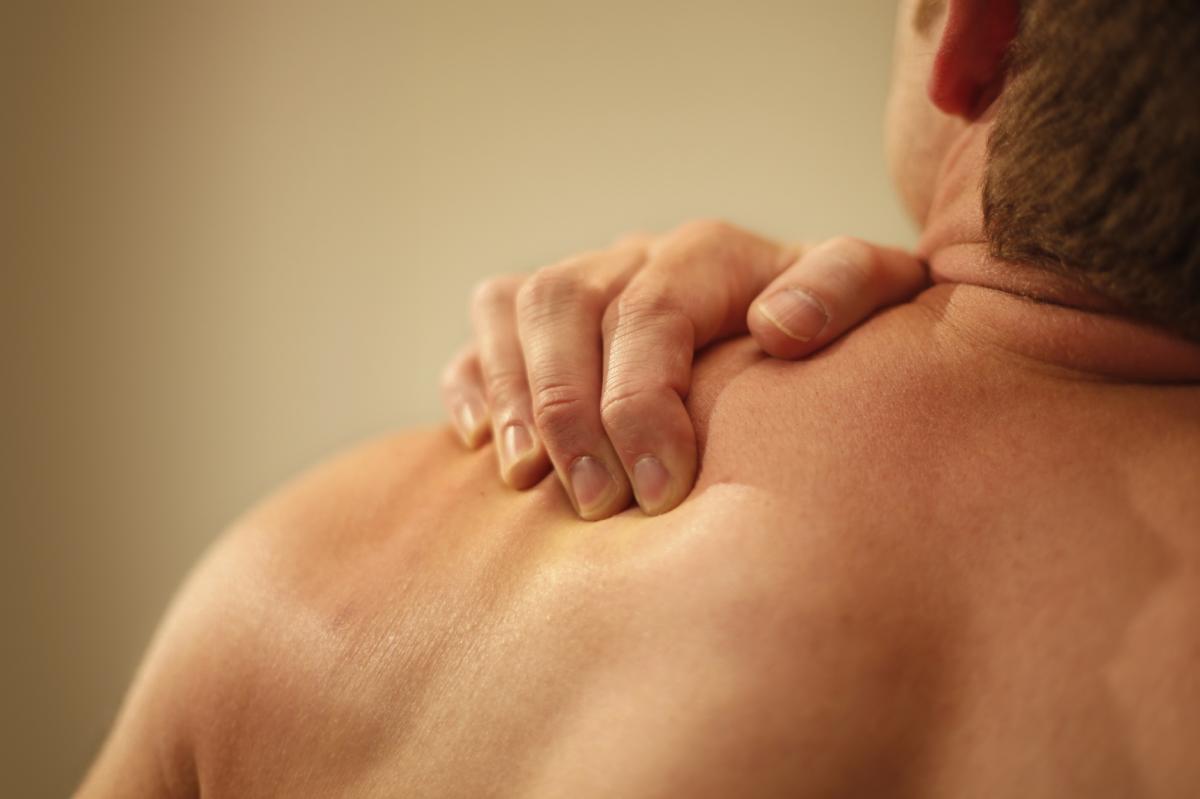Recognizing Shoulder Pain and Avoiding Shoulder Injuries
Clicking, crunchy noises?
Often patients complain of a clicking shoulder. The age at which the clicking began, whether they eventually became aware of it after an injury, and whether it’s a painful click are all factors we consider when evaluating a clicking shoulder.
Under 25, clicking is probably more related to an instability problem than in later years in which loose bodies and a thickened bursa are frequent causes. A painful click represents some type of pathology. A painless click indicates internal imbalances in the shoulder with the joint, muscles, tendons and ligaments.
The clicking can also be caused by a loose body (some type of extra material in the shoulder) and these are usually visualized by radiography.
The above causes of a click may also cause a palpable and audible crepitus (crunchy noise) at the same time.
A tear in the glenoid labrum can also cause a clicking shoulder. The labrum is a fibrous structure joined to the glenoid fossa (the socket of the shoulder blade which faces the ball of the shoulder bone). Its function is to deepen the concavity of the glenoid fossa (see picture to left), act as the origin for the some shoulder ligaments, and has a role in resisting forward movement of the ball of the shoulder (humeral head).
Often we are asked, Is it normal for my shoulder(s) to click? I have no pain associated with it.
The answer is: No, it is not normal, there is some type of underlying issue and with continued use can lead to future problems.
Forward Shoulders/Forward Neck
Probably one of the most common postural distortions we see is the forward head, forward shoulders posture. This distortion often appears in teenagers and progresses to old age. This forward head/forward shoulders places stress on the neck joints—leading to early arthritis, shoulder pain or shoulder injuries, causes nerves to be pinched, and the jaw muscles can be tight which can lead to tension headaches/ migraines.
This causes the chest to descend with the shoulder blade (scapula) shifting forward around the rib cage. In this position, the humerus rotates inward and the head and neck are brought forward.
This can be examined and worked on!

Do you notice yourself leaning in our slouching/slumping while doing daily activities? Would you like to improve your posture? Watch the video below to learn more about our changing posture and rounded shoulders and forward head.
In her 20+ years of practice, Dr. Rodwin has notices a huge rise in rounded shoulders and forward head. This can be a result of many factors including: lowering our heads to view our smartphones frequently, slouching while sitting, and improper posture! Dr. Rodwin addresses this in the video below and includes preventative measures that can be taken to reduce rounded shoulders and forward head.
Feel free to email dr.rodwin@back2health4you.com if you have any questions!
Scapulo-thoracic motion—often overlooked!
The muscles and joints of the shoulder allow it to move through a remarkable range of motion, making it the most mobile joint in the body!
The six motions in performs are: flexion (bringing forward), extension (to go backwards), adduction (to bring together), abduction (to bring apart), medial rotation (inward), lateral rotation (outward).
One most often over looked movements of the shoulder, which is key to resolving shoulder injuries is known as: Scapulo-thoracic motion. The Scapulo-thoracic motion is between the shoulder blade (scapula) and the thorax wall). The Scapulo-thoracic motion is a critical element for normal shoulder motion. During normal Scapulo-thoracic motion the shoulder moves 2/3 and the scapula 1/3 of the motion. When someone has a shoulder problem the mechanics are normally changed.
This change is that the shoulder starts to move only 1/3 and the scapula 2/3. This places pressure/force on the scapula, thoracic, shoulder, spine, muscles in these areas and the tops of the shoulder. There would be tension in the tops of the shoulders due to over-use of other muscle groups. This tension can manifest as shoulder pain.
A Shoulder Aggravating a Neck that Aggravates a Shoulder
The title of this article looks odd, usually when we attempt to find the source shoulder pain; we also evaluate the cervical spine.
If motion testing of the cervical spine does not refer pain to the shoulder, and motion testing of the shoulder reduplicates the patient’s shoulder pain, we would probably say pain is localized in the shoulder.
It is very important to evaluate the neck as well, because muscles from the neck insert into the shoulder blade.
These muscles can shorten, causing rotation of the neck vertebrae and restrictions in the neck vertebrae can result.
Also the nerves from the neck supply the sensory sensation to the shoulder. So shoulder discomfort can often be referred from the neck due to nerve related issues. Many people who have their shoulder treated do not have full resolution of the shoulder because the neck and upper back are not evaluated and treated with their shoulder condition. It will often get better, but not be quite 100%.



